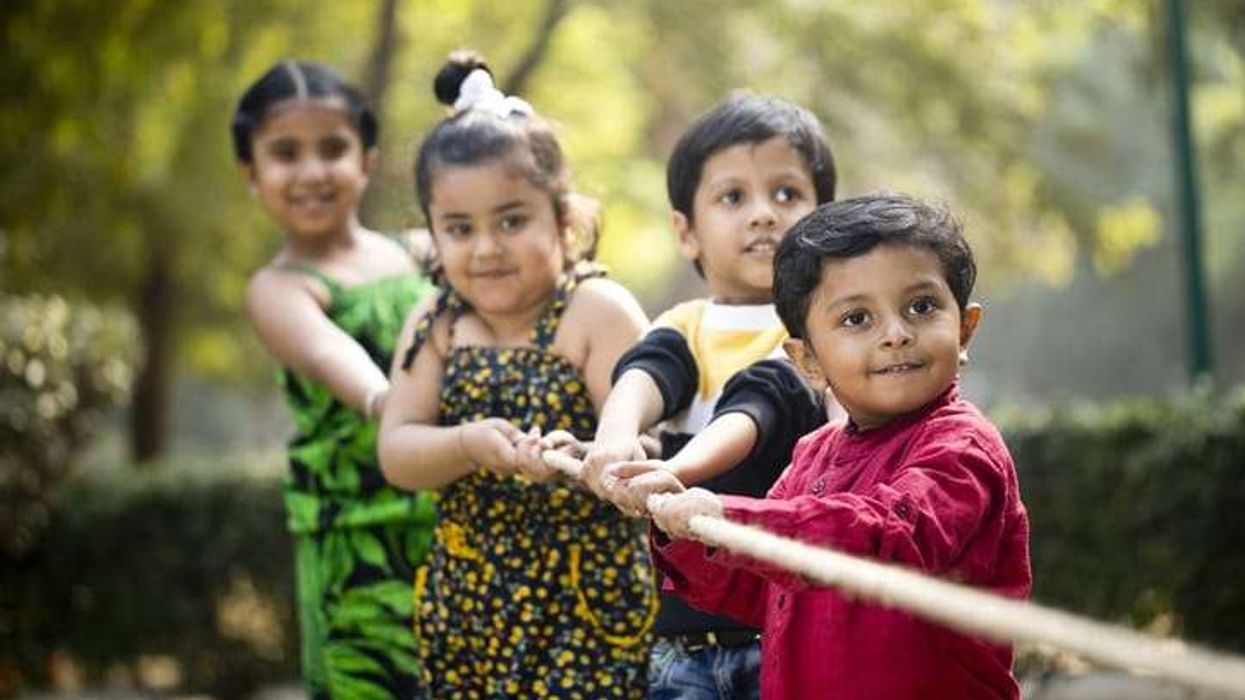RAJKUMAR KESWANI'S NEW BOOK DAASTAN-E-MUGHAL-E-AZAM CHARTS THE JOURNEY OF AN EPIC
by ASJAD NAZIR
IT TOOK ace director K Asif 16 long years to make India’s greatest film Mughal-e-Azam, and to celebrate the 60th anniversary of the 1960 epic, ace writer Rajkumar Keswani released a meticulously researched book dedicated to it.
His new book Daastan-e-Mughal-e-Azam was no less a labour of love and has taken him 15 years to write. The 392-page book reveals the spectacular stories behind the film, what kept director K Asif motivated, trivia, eye-opening anecdotes and glorious visuals, which include 25 images of 25 paintings dedicated to Mughal-e-Azam by late great artist MF Husain.
He has had full cooperation from K Asif’s family, including from his son Akbar Asif, who recently donated the Mughal-e-Azam screenplay to the Oscars library. The Hindi language book has received rave reviews, and it has been so popular that an English version is in the works.
Eastern Eye caught up with Rajkumar Keswani to discuss his epic book.
What first connected you to the film Mughal-e-Azam?
It was the songs and dialogues of the movie. I was just 10 when the movie got released in 1960 and used to hear so many of the rich dialogues being recited by people. The songs also enthralled me and my favourite was Ae Mohabbat Zindabad. As much as I loved the movie, I depended on my parents to watch it. I remember feeling pained when friends would get the opportunity to see the movie and return with the stories of grandeur and dialogues on their lips.
Do you remember finally getting to see the film?
Finally, one day, my father informed us that he had somehow been able to procure the tickets of the movie for the entire family. That was the evening when I got completely mesmerised and completely fell under the magic of the movie.
What inspired you to write Daastan-e-Mughal-e-Azam?
The echoes and images of Mughal-e-Azam always haunted me. In 2003, I resigned my job with NDTV to attend to my ailing wife. It was at that time when I took a firm resolve to write a book about K Asif, who by then had become a guiding star in my life. However, the speed of research was slowed down by me getting appointed editor of the largest circulated Hindi daily newspaper of India. I took retirement in 2009 and started devoting the required time to the project. So, another 11 years and the dream came true with the launch of Daastan-e-Mughal-e-Azam.
Tell us about the book?
In the past 60 years, a lot has been written about the movie. Hence, it was a challenge to go beyond all that repetition of the facts and fiction. It was a gigantic task to piece together the links of the story. I had to contact and convince the families of all those involved in the making of the movie. I had to dig fathom deep for the old time publications of various languages – ranging the period as wide as from the early 1940s to the present.
What was the biggest challenge of writing the book?
The challenge was to separate the fact from fiction. A lot of fiction, over a period of six decades, had got merged because of false claimers of the knowledge.
What do you think makes Mughal-e-Azam such a great film?
There are so many things, but in particular the art of storytelling. K Asif, on celluloid screen, has created a world where you automatically get transported to and become a part of it.
Why do you think the film is still so loved 60 years later?
Love is always loved, if it’s true and pure.
What's your favourite aspect from the making of the film?
You just cannot single out one aspect of the movie, which stands out or shines out over any other. That’s the greatest quality of the director, who maintained a great balance with every aspect of the movie and made everything complementary to each other.
What makes K Asif a great director?
Everything I just said, but also a great filmmaker not only controls or directs actors on the sets, but everyone involved in the making of the movie and inspires them. This one movie and all K Asif achieved with it is a perfect example of it. To make a Mughal-e-Azam you need to be K Asif.
How do you feel now the book is out?
I’m really glad to see the love the readers are showering over the story of my hero K Asif and now we are working on an English language version of it.
Why should we all get your book Daastane-Mughal-e-Azam?
It is a truly inspiring story. Also to know, what love can do to your existence.











